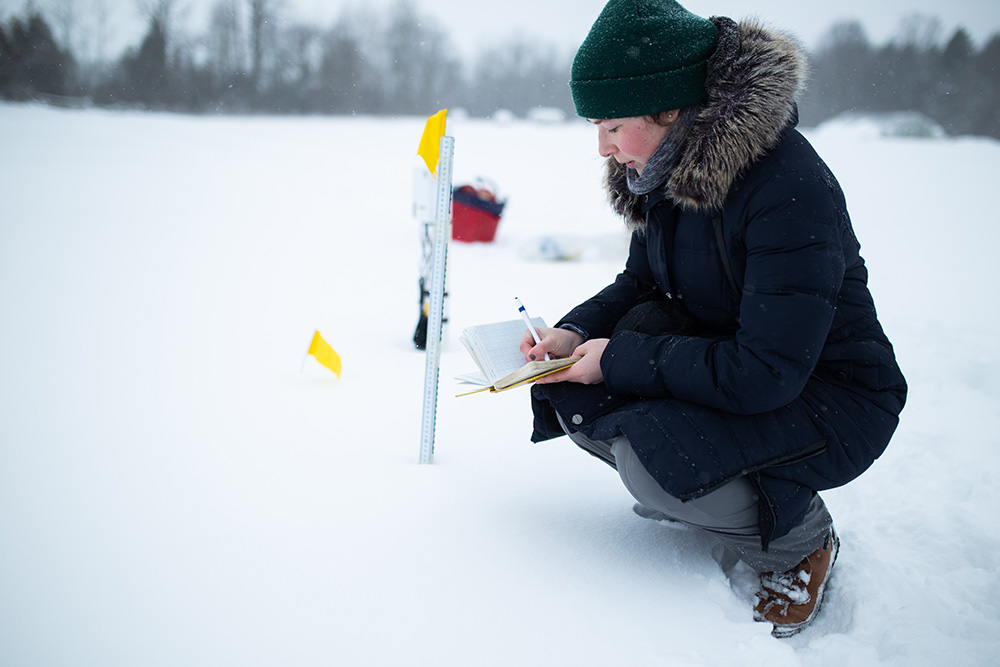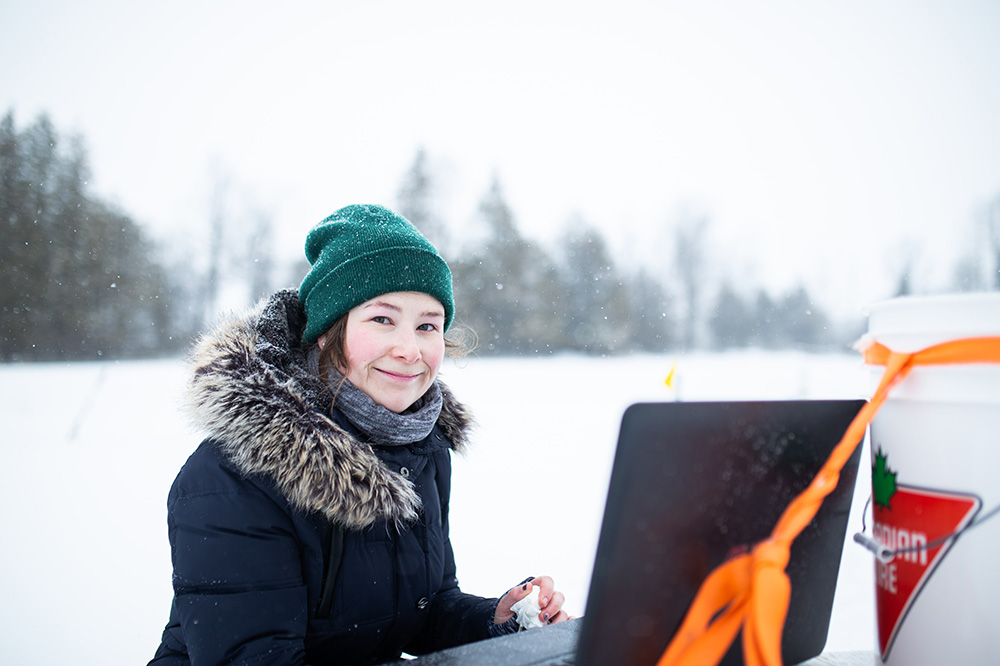Protecting the drinking water supplies Canadians rely on is a complicated feat even in monitored municipal systems. The challenge is amplified for non-regulated water sources such as private domestic wells or Northern communities grappling with thawing permafrost and pollution.
Researching these more vulnerable environments (in the context of climate change) to recommend mitigation strategies and adaptations that protect water resources for generations to come is what inspires Queen’s University’s newest groundwater researcher Stephanie Wright, PhD’21, Sc’16, who joined the Civil Engineering department in Winter 2023.
Wright brings an interdisciplinary focus to groundwater research, landing her at the intersection of several disciplines including geology, geological engineering, geography, and public health.
She is well suited to navigating this intersection, having completed her undergraduate degree in Geological Engineering and PhD in Civil Engineering focusing on hydrogeology, looking at the impacts of climate change on shallow groundwater systems, before pursuing a postdoctorate in Geography at Wilfrid Laurier University.
Now back at Queen’s, her research goal is to support the protection of safe and sustainable groundwater resources in cold regions impacted by climate change through field-based investigations combined with robust statistical and numerical analyses.

Over the summer, she will be travelling to Canada’s North, including Melville Island, Nunavut and the community of Whatì, Northwest Territories, joining other Queen’s researchers examining how thawing permafrost in the Arctic is causing groundwater reactivation and changes to freshwater supplies.
“As permafrost thaws, groundwater is able to flow again where it couldn't before, and that has many implications for water quantity and quality. It's opening new pathways for contaminants to be remobilized in the subsurface, which puts drinking water supplies at risk” she explains.
Many of these contaminants are residual of legacy and active mining sites, community waste sites, and sewage lagoons. All together, these sites represent thousands of potential contaminant sources in the North.
Wright says she is consciously conducting research in collaboration with Indigenous communities, a move away from traditional extractive research approaches where information is simply collected for dissemination in academic contexts.
“By focusing on building relationships and trust - by actually spending time in Northern communities to engage and listen and learn - we're trying to find ways to communicate our research in understandable, plain language that make sense to Indigenous Peoples and in the ways they learn and understand systems,” she explains.
Wright says she is interested in protecting drinking water supplies for remote and Indigenous communities, and ensuring the right to clean drinking water, along with understanding the carbon implications of climate change.
“Groundwater influences the microbial communities that end up emitting methane and carbon dioxide into the atmosphere, so it's one of those missing links where we need to understand what's going on in the subsurface to be able to estimate emissions accurately,” she explains. “There’s potential feedback loop where climate change is accelerating permafrost thaw, which will drive more emissions that further heat things up and cause even more thawing, and so on.”
When Wright begins teaching in the Fall, she will be instructing third-year groundwater engineering students along with leading a team of four undergraduate and masters students to complete research projects.
“Civil engineers, in particular, deal with the consequences of climate change in terms of how they design systems. They have to ensure our bridges, buildings, municipal infrastructure, and water systems are all going to perform under these new conditions, so incorporating climate change effects and climate projections to improve the way we design our systems is becoming a much bigger focus in our courses.”
Wright’s longstanding interest in combating the effects of climate change goes back to learning about the greenhouse gas effect in grade school and joining a committee focused on climate action.
“The role I ended up in makes perfect sense based on my childhood passions and interests. I’ve always been keen about being outdoors, camping, and enjoying nature and just wanting to preserve that,” she says. “Water specifically is one of the most important factors for life - everything in the environment depends on it. Humankind depends on it, so it seemed like the area where I could make the greatest splash.”

Photos: Shay Conroy / @shayconroy / shayconroy.com